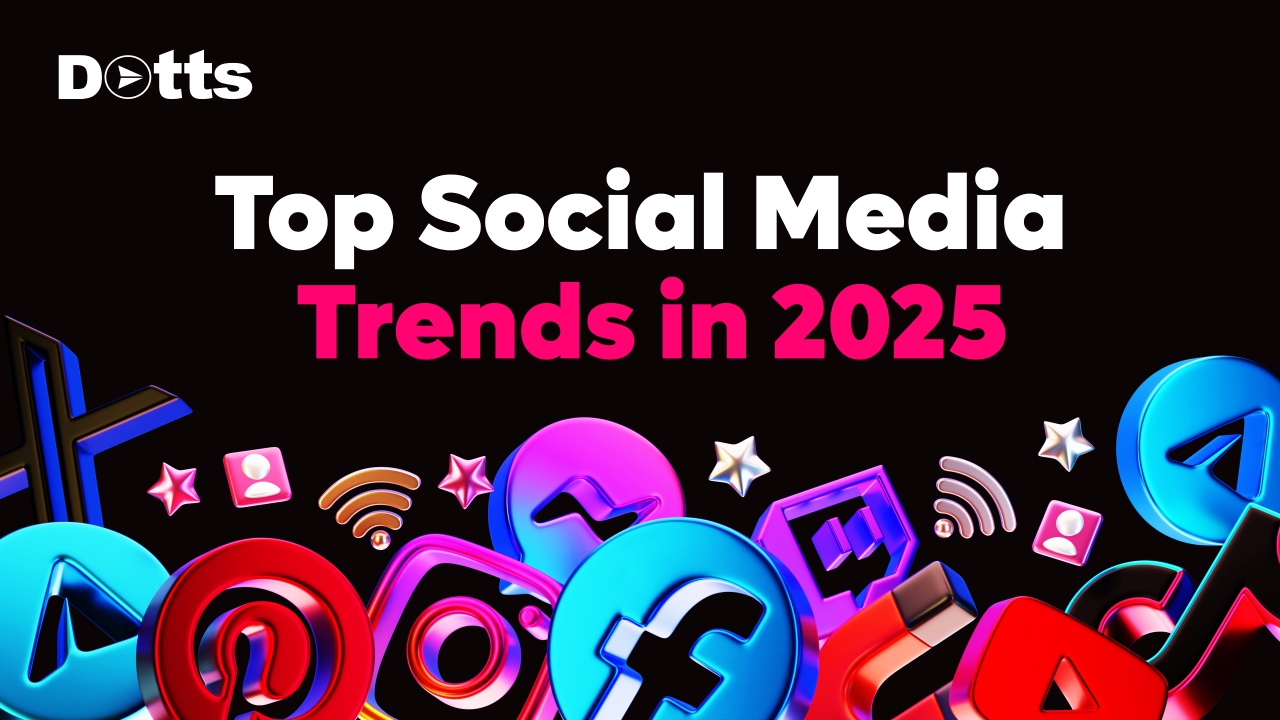Social media is changing faster than ever–what worked yesterday may be less effective tomorrow. So to stay ahead, brands must keep up with new trends and be ready to adapt. At DottsMediaHouse, we keep our fingers on the pulse of digital trends, ensuring brands across Africa and beyond stay competitive in an ever-evolving landscape.
Wondering what the biggest shift in 2025 would be? Social media is now moving beyond being “social” as platforms are transforming into full-fledged media hubs where users passively consume content rather than engage meaningfully.
Meanwhile, major players like TikTok, Instagram, and Facebook face challenges and continuously update features and algorithms that affect users and reshape the digital media industry. The recent uncertainty surrounding TikTok’s future has sent shockwaves through the industry, leaving businesses wondering about the stability and monetization strategies of the platforms they rely on. Meta, on the other hand, also announced its plans to scale back its diversity and inclusion initiatives and quit using fact-checkers, despite facing an EU regulatory investigation.
So to stand out as a successful brand, you must understand the social media trends and their driving force, and explore ways to use them to your advantage.
What Is Driving Social Media Trends in 2025?
One of the biggest indicators shifting the social media landscape is the uncertain fate of TikTok. A recent survey by Fohr revealed that 67% of TikTok creators are now looking at Instagram and YouTube as their next best options. However, there is a challenge—these platforms are much more competitive and their algorithms tend to favour polished, high-quality content rather than the raw, viral videos that TikTok popularized.
What does this mean? Creators and brands are forced to diversify their content across multiple platforms instead of relying on a single app. And that’s a trend that will only grow stronger in 2025.
Beyond these platform changes, social media users experience social fatigue from the endless scrolling, the overload of information, and the unrealistic influencer lifestyles. In fact, more people are starting to reduce their screen time, seek out more meaningful interactions, and turn to simpler, nostalgia-driven platforms.
This is why platforms like SpaceHey, and WhatsApp—which focus on authenticity and real community engagement—are popular. Instead of focusing on likes and follows, these platforms are trying to recreate the personal, intimate feel that social media used to have before everything became about algorithms and ads. For brands, this means that engagement strategies need to shift which includes focusing on building real connections with your audience instead of only pushing promotional content.
And the shift also extends to the regulatory scrutiny most social media platforms are undergoing. Governments around the world are cracking down on issues concerning user privacy, misinformation, and the mental health impact of social media—especially on younger audiences. This means brands must be more mindful of compliance while also adapting to new content distribution strategies.
Now, let’s explore the top social media trends your brands should watch in 2025.
-
Short-Form Video Will Continue to Dominate
Short-form video is not going anywhere anytime soon–it is rather evolving with TikTok, Instagram Reels, YouTube Shorts, and Facebook Reels leading the charge. The Gen-Z platform, TikTok boasts over 2 billion users and is projected to reach 1.8 billion monthly active users by the end of 2025. Meta reports that 60% of time spent on Facebook and Instagram is now dedicated to video.
Why does this format work? Short-form videos are highly engaging and cater to shrinking attention spans, offering high engagement, and allowing for quick storytelling. Also, reports indicate that 90% of vertical videos have a higher completion rate than horizontal ones. Therefore, brands must master storytelling in under 60 seconds to maximize impact and engagement. Other ways to become successful at short-form video is to do the following:
- Optimize for vertical viewing
- Add captions and trending sounds
- Make the videos concise and compelling
A great example is adidas, which uses engaging videos to showcase products while staying authentic to its brand voice. So, if your brand is yet to prioritize short-form videos, you are missing out on the most engaging content format of the year.
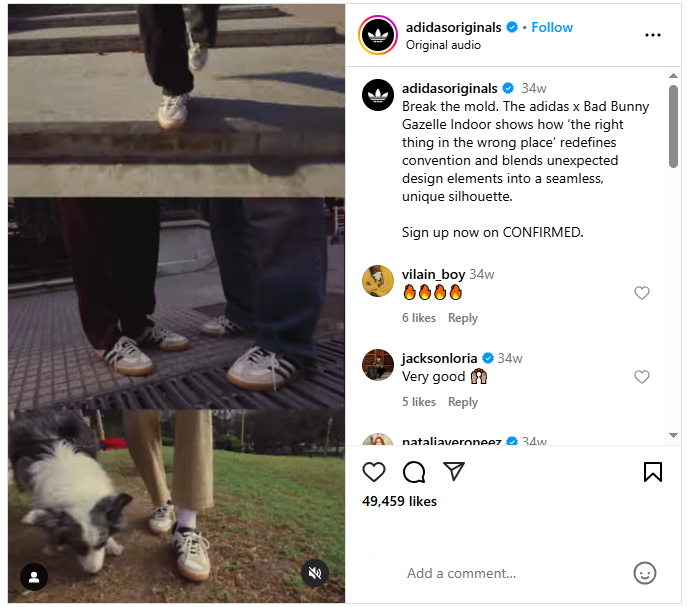
-
User-Generated Content Will Be King
User-generated content (UGC) is taking over, with platforms like TikTok promoting its value through programs like the Creativity Program. Research shows that UGC makes up 55.7% of TikTok’s content, and 18% of creators rely on it as their primary revenue source. Brands that embrace UGC will not only drive engagement but also build trust with their audiences. Therefore, shift your influencer strategy to work with micro and nano influencers (in your ideal platforms) who create more relatable content for your ideal audience.
Furthermore, LinkedIn is seeing a rise in B2B creators using the platform to share insights, positioning themselves as thought leaders. An example is Oche Writes–a content marketer–who trains entrepreneurs to create content that positions them to attract clients and grow. He does this through physical/virtual training and compelling content on LinkedIn. This shift underscores the importance of niche creators in driving industry-specific conversations.
For brands, the takeaway is to move beyond traditional influencer marketing and explore long-term partnerships with creators who genuinely align with your audience.
-
AI Will Transform Digital Creation
Artificial intelligence is changing how brands create content in modern times. Instagram’s upcoming MovieGen feature will allow users to edit videos using simple text prompts. On the other hand, platforms like Keek are using AI for real-time video translation and personalized avatars, enabling creators to connect across different languages.
Furthermore, AI is transforming advertising for marketers with 38% citing increased efficiency as the top benefit. TikTok’s Smart+ AI-powered solution helps automate campaign management (targeting, bidding, and creative optimization) giving brands more precision in reaching their audiences. ChatGPT and other AI tools are also streamlining content generation.
However, brands must focus on quality over quantity by balancing AI automation with human creativity to maintain authenticity. AI-generated content is only as good as the prompts provided, so ensure you create well-structured prompts for more personalized and on-brand results.
-
Social Search Will Become a Key Discovery Tool
More users are turning to social media as a search engine. Platforms like Instagram, Twitter, TikTok, and YouTube now play a major role in consumer discovery, with AI-driven search features providing instant, curated answers. This means you can optimize for social search through keyword-rich captions, hashtags, and interactive content which is becoming as important as traditional SEO.
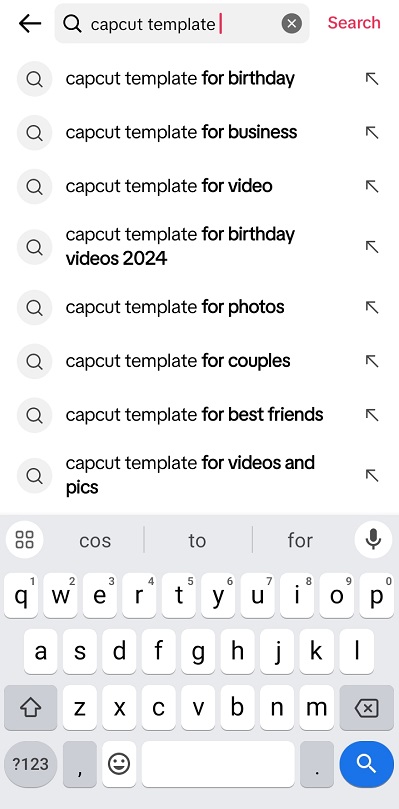
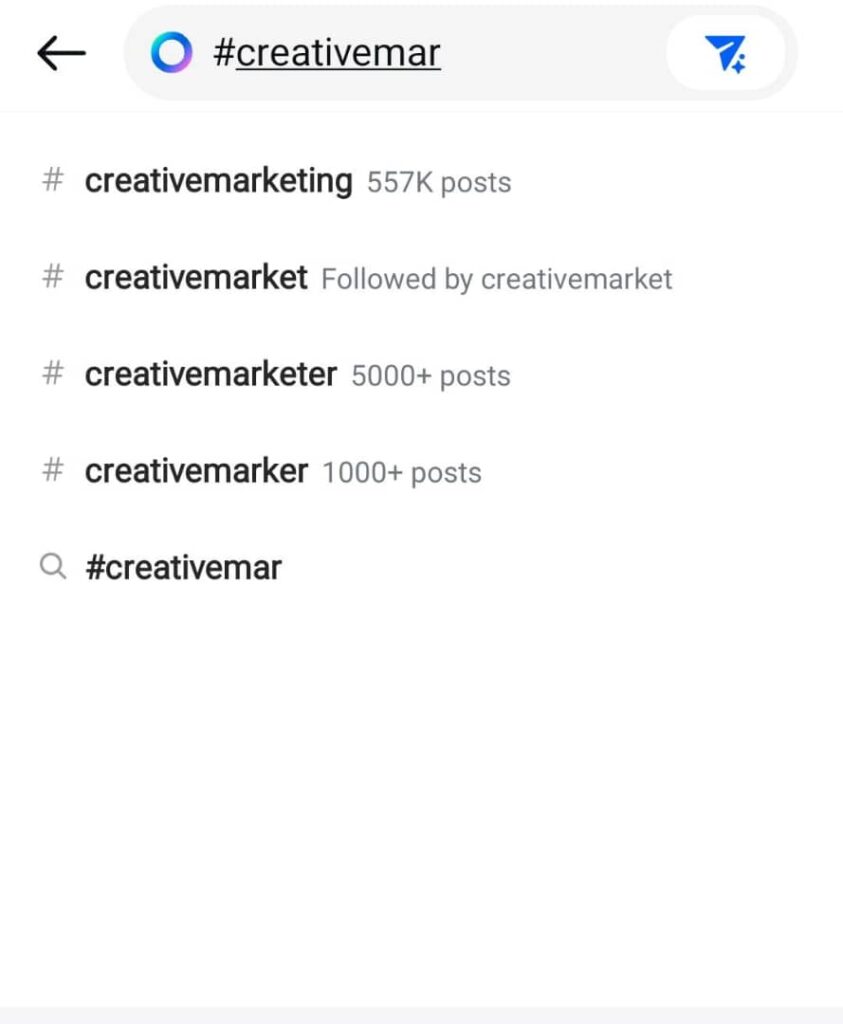
Therefore, the rise of AI-powered search queries, summaries, voice search optimization, and scannable content means brands must rethink how they structure content to gain visibility on social media.
-
Private Communities Will Gain Popularity
With public feeds becoming oversaturated, users are moving toward private groups on platforms like Facebook Groups, WhatsApp, Telegram, Discord, and Slack. Over two-thirds of internet users already participate in online communities, and 60% say they are more loyal to brands with active communities.
This shift is driving brands to create exclusive niche spaces where users can engage directly with their favorite creators and companies. Platforms like Keek, Instagram’s subscription model, and invite-only LinkedIn groups are capitalizing on this trend, allowing users to connect on a deeper level. Therefore, brands that recognize these consumers’ behaviour of seeking deeper and meaningful interactions and create exclusive communities or groups will have a competitive edge.
-
Social Commerce Will Continue to Grow
Social media is now becoming a major e-commerce player with social commerce being on track to hit $141 billion in revenue in the U.S. over the next five years. Brands using TikTok Shop, Instagram’s “Shop” tab, and Pinterest’s shopping features are driving significant sales, streamlining the buying process. Reports indicate that stores with an active social presence see 32% more sales than those without.
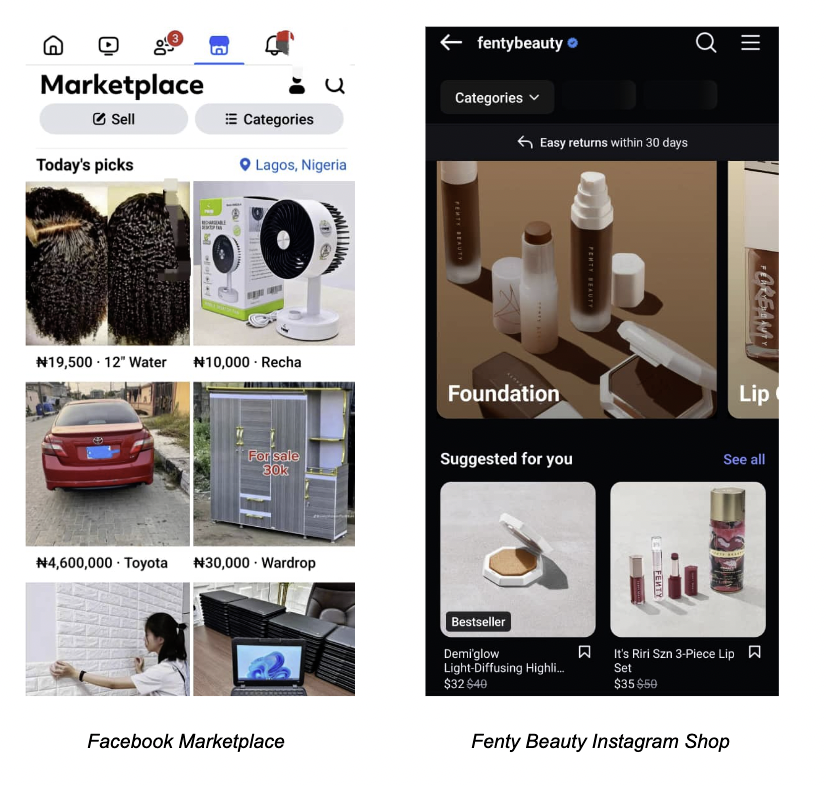
Brands can drive conversions through live shopping events, influencer-led product demos, and UGC-powered testimonials. Social commerce encourages seamless, in-app shopping experiences, reducing friction and enhancing impulse purchases.
-
Social Media Platforms Will Face Stricter Regulations
It’s no longer news that governments in different countries are curbing several practices on social media platforms. For example, Australia banned children under 16 from using social media, imposing fines on platforms that fail to comply. In Europe, Meta is under investigation for potentially harming children’s mental health. Furthermore, TikTok’s future in the United States remains uncertain as regulatory concerns mount.
Meta also made controversial decisions, such as removing third-party fact-checkers and scaling back diversity and inclusion initiatives. These changes highlight growing concerns about misinformation and ethical business practices, which will define brand strategies moving forward.
Final Thoughts on 2025 Social Media Trends
The social media ecosystem in 2025 is dynamic and competitive, yet full of opportunities. As these trends continue to evolve, the brands that succeed will be those that embrace authenticity, explore multiple platforms, leverage AI strategically, and foster genuine community engagement.
However, you are not alone–our team of experts at DottsMediaHouse will guide you through these changes, helping you build powerful social media and content strategies to maximize your digital presence.
If you enjoyed this blog post, subscribe and share it with your network. Let’s stay ahead of the trends together!


